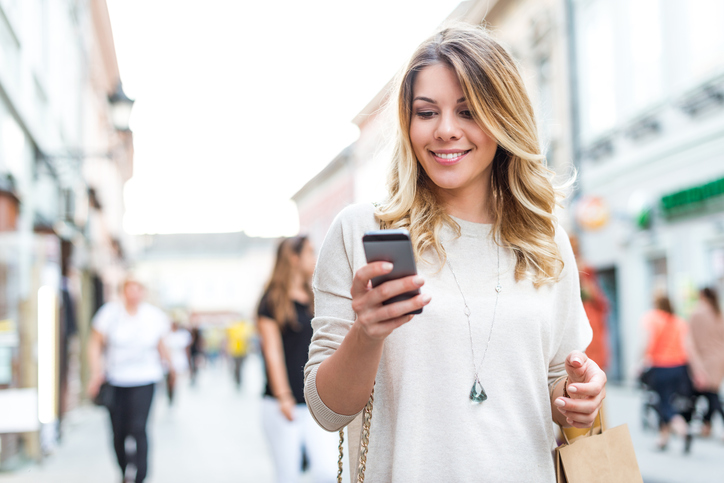Over the last year, the pandemic forced stores to shutter, compelling brands to get creative with their online retailing. Many brands have pivoted to incorporate video shopping into their online offering in order to replicate the in-store customer experience online.
Video shopping has become the norm as brands like Gucci, Valentino and Prada have adapted both personal, one-on-one shopping assistance, and live shopping events billed as “Trunk Shows.” As Vogue Business noted, this type of virtual retailing is a $4.4 billion market (and growing!) in China and has transformed from a supplemental “nice-to-have” offering for eCommerce business into a necessary tool for brands hoping to flourish in a world where in-person shopping may take time to return to previous volumes.
These face-to-face video shopping services are a powerful tool for retailing and clienteling. Similarly, in a pre-COVID-19 world, in-store customer service and the entire experience of walking into a luxury store was important; but only part of a holistic strategy for creating an aspirational lifestyle and culture around one’s brand. Retailers also use experiential marketing to build brand affinity and loyalty, in the form of events, entertainment and engagement.
Whether the activation is a gorgeous and memorable artistic experience (see St-Germain’s floral installation in Brooklyn where passerby could walk underneath 1000 flowers and clip a bouquet to take home); an interactive opportunity to design-your own delicious product (a la customizable 3D-printed oreos at SXSW); an Instagrammable funhouse (see Refinery29’s 29Rooms); or an exclusive event (like when Delta teamed up with Vice to create a series of events for young entrepreneurs), brand experiences put customers front and center and encourage positive associations with their brand.
Brands are recreating high-touch shopping experiences with the assistance of emerging virtual shopping technology. Yet, they’re still struggling to replicate the sensations created by in-person experiential marketing. Pre-COVID, retail brands used pop-up shops, art installations, and immersive experiences to create memorable beyond-the-store experiences for their customers. Now, brands who are ahead of the curve are getting creative in order to create virtual experiences to engage with their shoppers outside of traditional selling models.
Tips to Take Your Video Retailing Efforts to an “Experiential” Level
Lately, brands have pivoted to create new ways to engage with their audience, including leveraging live video shopping technology. Virtual selling platforms have created opportunities for brands to showcase new products via virtual fashion shows and runway events. This is a crucial solution for many brands who usually rely on traditional clienteling to invite customers into the store to see new arrivals – they’re now inviting these clients into the store virtually to see live streamed trunk shows and collection preview via video while they’re sitting safely at home.
Now, brands are seeking to go beyond the old definition of selling products online by offering what is essentially a digital catalog, to provide a highly engaging virtual experience for clients and prospects. This fosters brand loyalty and equity in the same way in-person experiences do.
Focus on What Helps Your Customer
One cosmetics brand hosted a virtual summit meant to teach viewers how to nurture themselves, mind, body and soul. Attendees visited the L’Oréal website to hear from women in tech, took yoga classes, and discussed self-care rituals that go beyond skincare and beauty. The brand invited guest hosts all over the globe to log into the brand’s virtual selling app and begin addressing thousands of website visitors instantly.
Another global cosmetics retailer is planning a series of make-up workshops with various themes for specific occasions. In anticipation of bridal season, a special bridal make-up lesson is in the works, where brides-to-be can learn how to do their own make-up for their special day. Invitations are limited to VIP members and attendees will receive a gift set of make-up samples and other gifts, based on a questionnaire presented in the registration form.
Add an Air of Exclusivity
One of the most expensive jewelry brands on the globe has also begun planning live trunk shows for website visitors. They have plans to host a series of “from the vault” shows, showcasing rare and vintage collector’s pieces previously unavailable for purchase. All this lends an air of exclusivity, and collectors are pleasantly surprised at the opportunity to purchase limited and special edition items.
Cartier recently produced an exclusive “private broadcast,” filmed with top-tier Hollywood cast and crew, to recreate the experience of being at one of their dinner parties. VIP clients received a private, custom link in which to view the broadcast, and Cartier delivered gift boxes filled with champagne, caviar, and chocolates to augment the experience.
Make it Social
In another example, an online grocery subscription service has begun hosting cooking classes advertised as “Wine Nights,” inviting members to cook along at home while a host teaches them how to use fresh ingredients and wine sold by the service.
Another cosmetics brand is using video technology to go behind the scenes and show how their products are made, hosting Q&A sessions with product development specialists and speaking to the company’s focus on eco-friendly and vegan products.
Meanwhile, many other brands are using this virtual shopping software not to promote products, but to promote company culture by hosting Q&As and mini-thought leadership panels with their executive staff, discussing company values and pressing issues such as sustainability and diversity in their respective industries. Some are even using the live streaming service to conduct virtual job fairs.
Non-retail companies are also using this technology. A local government in Australia created a series of live-streamed events in which local librarians read children’s stories to local youths. The possibilities are endless for creating connections with your customers and constituents.

Experiential marketing is a valuable tool in raising brand awareness and elevating public perception of a brand. These creative virtual events prove that retailers have adapted to extend their customer experience and culture from beyond their storefronts and into their customers’ homes. By focusing on the customer’s wants and needs outside of simply selling to them, brands build customer loyalty and affinity and attract a new audience they may previously not have reached. The virtual shopping technology many brands use allows the company to retain information on attendees’ interests and site behavior, making future marketing and follow-up efforts fully customizable.
Powerfront LIVE Virtual Shows has superior, secure video quality and implements quickly and easily. The virtual selling solution streams directly from your website and broadcasts to your website visitors. Best of all, Powerfront LIVE Virtual Shows allows your online customer service agents to see each attendee’s browsing behavior, basket contents, purchase history, and likes. Find out why 20 leading luxury brands are already using Powerfront LIVE Virtual Shows and request a demo today.


